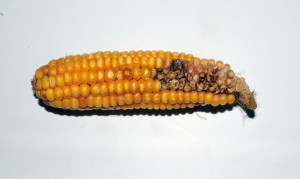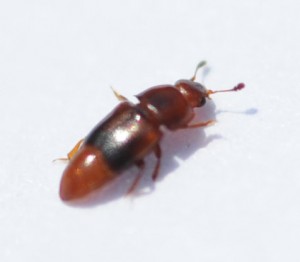Sap Beetle Management in Mature Corn
go.ncsu.edu/readext?373974
en Español / em Português
El inglés es el idioma de control de esta página. En la medida en que haya algún conflicto entre la traducción al inglés y la traducción, el inglés prevalece.
Al hacer clic en el enlace de traducción se activa un servicio de traducción gratuito para convertir la página al español. Al igual que con cualquier traducción por Internet, la conversión no es sensible al contexto y puede que no traduzca el texto en su significado original. NC State Extension no garantiza la exactitud del texto traducido. Por favor, tenga en cuenta que algunas aplicaciones y/o servicios pueden no funcionar como se espera cuando se traducen.
Português
Inglês é o idioma de controle desta página. Na medida que haja algum conflito entre o texto original em Inglês e a tradução, o Inglês prevalece.
Ao clicar no link de tradução, um serviço gratuito de tradução será ativado para converter a página para o Português. Como em qualquer tradução pela internet, a conversão não é sensivel ao contexto e pode não ocorrer a tradução para o significado orginal. O serviço de Extensão da Carolina do Norte (NC State Extension) não garante a exatidão do texto traduzido. Por favor, observe que algumas funções ou serviços podem não funcionar como esperado após a tradução.
English
English is the controlling language of this page. To the extent there is any conflict between the English text and the translation, English controls.
Clicking on the translation link activates a free translation service to convert the page to Spanish. As with any Internet translation, the conversion is not context-sensitive and may not translate the text to its original meaning. NC State Extension does not guarantee the accuracy of the translated text. Please note that some applications and/or services may not function as expected when translated.
Collapse ▲A number of folks are concerned about sap beetle injury this year. Sap beetles are secondary pests. That means that they feed once something else has already damaged the kernels. We’ve seen experiences a fair bit of earworm injury this year on hybrids with dual-protein Bt’s. This is something that is probably NOT a concern of for yield from the earworm side, but sap beetles can move in behind earworm injury and feed on the injured kernels, causing some yield loss and increasing the risk for aflatoxin contamination. I’ve also received some reports of fall amryworm injury, with sap beetles causing the same problems. What can be done?
1. Identify the problem. Sap beetles hollow out kernels, rather than completely consuming the kernels. The adults are small black beetles and the larvae are small white worms. Again, these are secondary feeders that often follow worms. Earworms typically feed at the tip of the ear, whereas fall armyworms will feed throughout the ear and often leave holes that are drilled into the cob and dry powdery residue reminiscent of powdered milk.
2. Adjust your harvest. The longer corn sits in the field, the more it is exposed to sap beetle feeding. Turn up the blower on the combine to get rid of out insect-damaged kernels and their associated mess. Recent research out of Georgia shows that there is more insect injury and aflatoxin on field edges. Consider separating corn harvested from field edges from that in the interior.
3. Protect corn as it enters the bin. If sap beetles are still present after harvest, they can be managed as it is going into storage. Note that this information is from Dr. Mike Toews at University of Georgia. Actellic at the highest labeled rate can be effective and long lasting. Finding the product may be tricky, so be sure to work with your distributor if you think you might have a problem. Hook a sprayer up (ATV sprayer is fine) with a nozzle directed at the grain on the bottom of the auger. The goal is to contact every single seed with the material. As the auger delivers the seed up to the bin, it will mix the material onto the seed. Aim to deliver 5 gallons of material for every 1,000 bushels of grain. Centynal is an alternative product that can be used, but it is not as effective as Actellic. Malathion is ineffective.
4. Buy an appropriate hybrid for 2016. Since sap beetle is a secondary pest, you can avoid problems by hybrid choice. Choose a hybrid with effective control of corn earworm and fall armyworm. The best choices to manage these pests are Agrisure Viptera (3110, 3111, 3220) and Optimum Leptera. Optimum Intrasect, Genuity VT Double PRO, and SmartStax are usually good choices except under high insect pressure. All three of these products experienced earworm control problems in areas of our state during 2015, but looked very good in other areas. Finally, since some hybrids have a characteristic where the cob tip is exposed out of the husk, chose one where the tip is the least exposed.
5. Manage stink bugs in corn. Stink bugs can also cause the cob to become exposed and probably increase the chances for sap beetle problems (although this have never been shown). See management guidelines for stink bugs in corn.




